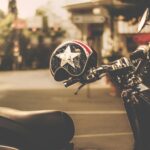Have you ever felt overwhelmed by the amount of motorcycle gear available? What gear is critical versus optional? Where should you splurge versus save? I believe every new rider, including myself, found navigating the world of motorcycle gear daunting. With countless brands, varying price points, technical jargon and conflicting opinions from long-term riders, it’s hard to know where to begin. That’s where this motorcycle gear guide comes in. I created this guide to help beginners, passengers, and, to some extent, my younger self understand the basics of motorcycle gear. We’ll walk through each essential item, explain what to look for, and help you make informed decisions about your gear.
Keep reading to learn how to “dress for the slide, not the ride”, and stay safe and comfortable on every ride.


Motorcycle Gear Guide: Why Does it Matter?
The philosophy of ATGATT – All The Gear, All The Time – sums up the ideal understanding of protective equipment. Motorcycle gear is meant to be worn on every ride, every time. Whether cruising around town or embarking on a long-distance tour, proper gear can be the difference between walking away from a fall or facing serious injuries.
Therefore, the three main reasons why motorcycle gear matters are:
- Risk Reduction: According to the National Highway Traffic Safety Administration (NHTSA), riders are 28 times more likely to die in a crash compared to passenger vehicles. The right safety gear is critical in reducing the severity of an accident, or from a fatality to an injury.
- Comfort and Control: Well-designed gear upgrades the riding experience. It regulates body temperature, blocks wind and rain, decreases fatigue, enhances grip and improves focus.
- Confidence Boost: Feeling safe in your gear helps you ride with assurance, especially in challenging conditions. It also allows you the peace of mind to focus on the ride rather than adjusting your gear, feeling uncomfortable or experiencing additional worry.
When it comes to physical safety, consistency is key. After all, accidents always happen “that one time” when you were unprepared. It is always better to prepare more than you think is necessary than take a risk doing less.
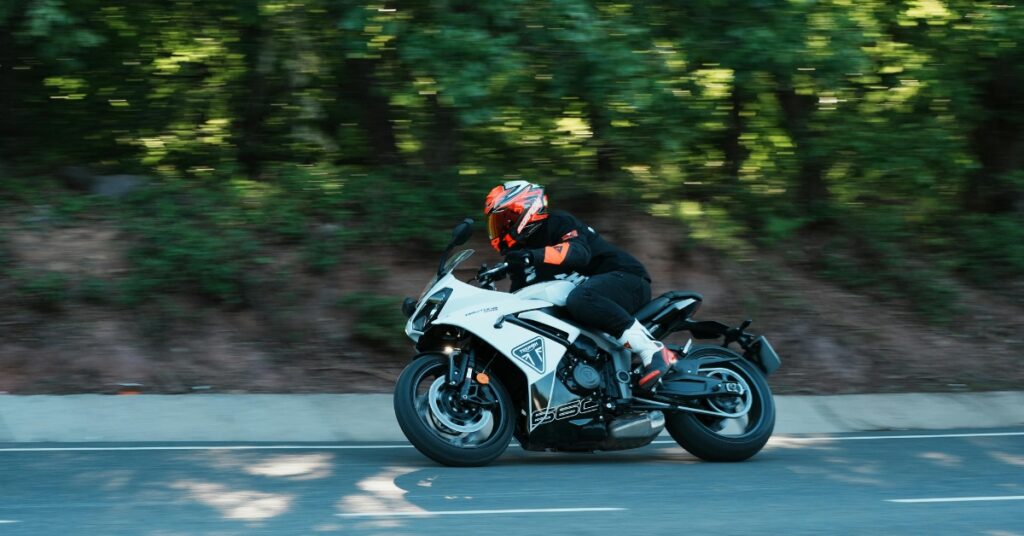
Motorcycle Helmets: Your First and Most Important Purchase
In many countries, especially in the Western world (Australia, New Zealand, Canada, etc.), helmets are a non-negotiable. You cannot legally ride a motorcycle on a public road without a helmet, and you risk large fines for doing so.
- Types of Helmets: Full-face helmets offer the highest protection, while modular helmets add versatility with flip-up chin bars. Open-face and half helmets provide less coverage and are not suitable for use on motorcycles.
- Safety Standards: Look for DOT (U.S.), ECE (Europe), or SNELL certifications. These indicate the helmet has passed rigorous safety testing. In Australia and Canada where I live, helmets that don’t meet these certifications are generally not sold.
- Fit: A properly fitting helmet should be snug without causing discomfort. Beginners should always purchase their first helmet in store and be professionally fitted.
- Additional Features: Look for anti-fog visors, good ventilation, lightweight construction, and removable liners for hygiene. Beginners should go for something mid-range, sturdy and tested for safety before exploring optional extras.
It is tempting to feel the wind in your hair, especially in hot and sweaty summers. Unfortunately, no matter how experienced a rider you are, one bad move can leave you with brain damage. Best not to risk it!

Motorcycle Jackets: Protection and Performance in One
A motorcycle jacket does more than keep you warm – it’s engineered for impact and abrasion protection. Similar to helmets, most riders regularly wear motorcycle jackets, making them the most commonly worn safety clothing. Nonetheless, a few hours on a bike in the wind and cold, regardless of accidents, would inspire anyone to wear one!
- Materials: Leather is a classic choice with great abrasion resistance. Textile jackets offer better breathability and weatherproofing.
- Armour: CE-rated armour at the shoulders, elbows, and back is essential. Some jackets allow you to upgrade your armour.
- Versatility: Look for ventilation panels, waterproof liners, and thermal layers. These allow you to ride comfortably in various weather conditions.
- Fit: Jackets should be snug but not restrictive, with sleeves that don’t ride up when you raise your arms. Beginners are best to get professional advice on their first jacket. For women, I would strongly recommend purchasing women’s motorcycle jackets. Our bodies are not “small men” sized, so unisex jackets usually don’t sit right on our curves.
A good jacket is an investment in your safety and riding comfort. Always buy the most expensive jacket you can afford, quality and cost are often well-matched in safety gear. Make sure you also consider your riding style and most frequent riding conditions (e.g. heat, wind, cold) to match your jacket accordingly.

Motorcycle Pants: Better than Jeans?
I will be honest here, neither my boyfriend and I wear motorcycle pants. My current logic is that I only ride occasionally, I avoid high speeds and highways and it is mostly during travel. You will never see a bare leg exposed here! Nonetheless, I am aware that our lower half needs just as much protection as our upper bodies.
- Armoured Riding Pants: Choose pants with integrated or removable CE-rated armour at the knees and hips.
- Abrasion Resistance: Look for reinforced materials in impact zones. Kevlar-lined or Cordura-based fabrics are common.
- Styles: Riding jeans offer a casual look with hidden protection, while textile overpants provide all-weather capabilities.
- Comfort: Consider stretch panels, adjustable waistbands, and zippered vents for airflow.
A solid pair of motorcycle pants complement your jacket and completes the protective shell your body needs. Regular jeans won’t cut it, even though I currently wear them!

Motorcycle Gloves: Control and Protection at Your Fingertips
Your hands are your primary interface with the bike. They deserve full protection. As a dentist IRL, my primary “money makers” are my hands. You would not believe the lengths I go to protect the health and functionality of my hands. Any doctors, hairdressers, tradespeople – anyone who works with their hands for a living – pay close attention here.
- Full-Finger Gloves: Always opt for full-finger coverage for better protection.
- Impact Protection: CE-rated knuckle armour and palm sliders absorb shock and reduce abrasion.
- Grip and Feel: Gloves should allow precise control without restricting motion.
- Weather Features: Waterproof, insulated gloves are vital in cold or rainy weather, while mesh gloves excel in the heat.
Motorcycle gloves are a small investment with a massive safety payoff. As always, when choosing motorcycle gloves, consider your riding style and weather. Weekend joy rides require different gear to multi-day touring.

Motorcycle Boots: Your Foundation on Every Ride
Regular sneakers won’t offer the protection of support you need while riding. Anything less, including sandals or shoes that don’t securely attach to your foot are also a no go. Good motorcycle boots help you stay planted and protected, whether you’re navigating traffic or manoeuvring a heavy bike.
- Structure: Boots should cover the ankles, offer rigid sole support, and have reinforced toe and heel boxes.
- Protection: Look for gear shift pads, ankle armour, and abrasion-resistant materials.
- Style and Use: Street, touring, and adventure boots each serve different needs. Choose according to your riding style.
- Fit and Comfort: Boots should fit snugly without pressure points and provide adequate grip for foot controls.
Unfortunately, once again, this part of the motorcycle gear guide is here to help both you and I. Although I always ride with closed-in shoes, I have not yet invested in riding boots myself. Writing this article has definitely inspired me to do so!
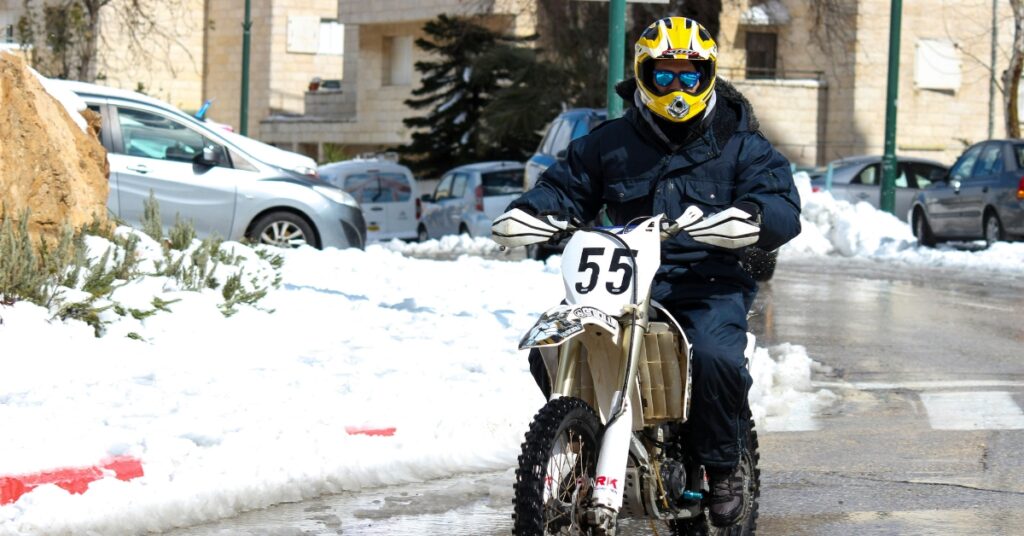
Optional but Useful Motorcycle Gear and Accessories
Once you have covered the basics, consider these helpful additions.
- Base Layers: Technical base layers help regulate body temperature and wick away sweat. In cold weather, thermal base layers add insulation. In hot weather, moisture-wicking and ventilated fabrics reduce discomfort and chafing.
- Rain Gear: Even waterproof outerwear can become saturated during long rides. Dedicated rain gear—like overpants and rain jackets—adds an extra waterproof barrier and can be stored compactly in your luggage for sudden downpours.
- High-Visibility Gear: Reflective vests, arm bands, or gear with built-in reflective panels drastically improve visibility during dawn, dusk, or foggy conditions. This is especially useful for commuting and night riding.
- Communication Systems: Bluetooth headsets integrated into your helmet allow hands-free communication, turn-by-turn GPS navigation, and even music streaming. Popular systems like Cardo or Sena are designed for durability and ease of use.
- Cooling Vests and Neck Gaiters: In hot climates or during summer rides, evaporative cooling vests can drop your core temperature. Neck gaiters or bandanas provide sun protection, dust filtration, and warmth in cooler temps.
- Heated Gear: For riders in colder climates, heated gloves, jackets, or insoles powered by battery packs or your bike’s power system can be game-changers. Some systems allow temperature control via smartphone apps.
These accessories round out your gear and enhance your comfort and safety on the road. Out of the above, although not specifically tailored for motorcycles, I have two beloved rain coats I bought from the company Rains. They have lovely colours, fit over bulky jackets have served me excellently!

Motorcycle Gear Guide Budget
Starting from scratch doesn’t have to break the bank. I always encourage new riders to buy the best they can afford, meanwhile considering they buy for what they actually need as per their riding style.
- Prioritise Essentials: A good quality helmet is mandatory, followed by a jacket. Gloves would be next, followed by pants and boots. You may be tempted by all the motorcycle accessories available, but it is important to spent most of your budget on things that matter most.
- Set a Budget: Expect to spend $800 to $1500 for a quality starter kit, which includes a helmet and jacket at a minimum. Any additional accessories that fall out of this budget can always be bought next pay check (or next year!).
- New vs. Used: Helmets should always be bought new. Other gear can be purchased second-hand if inspected carefully.
- Entry-Level Brands: Brands like BILT, Sedici, Joe Rocket, and REV’IT offer great value for new riders.
Planning your purchases wisely ensures you get the most value and safety from your gear setup. There is always room to upgrade in the future as you use your current gear and become a more experienced rider.
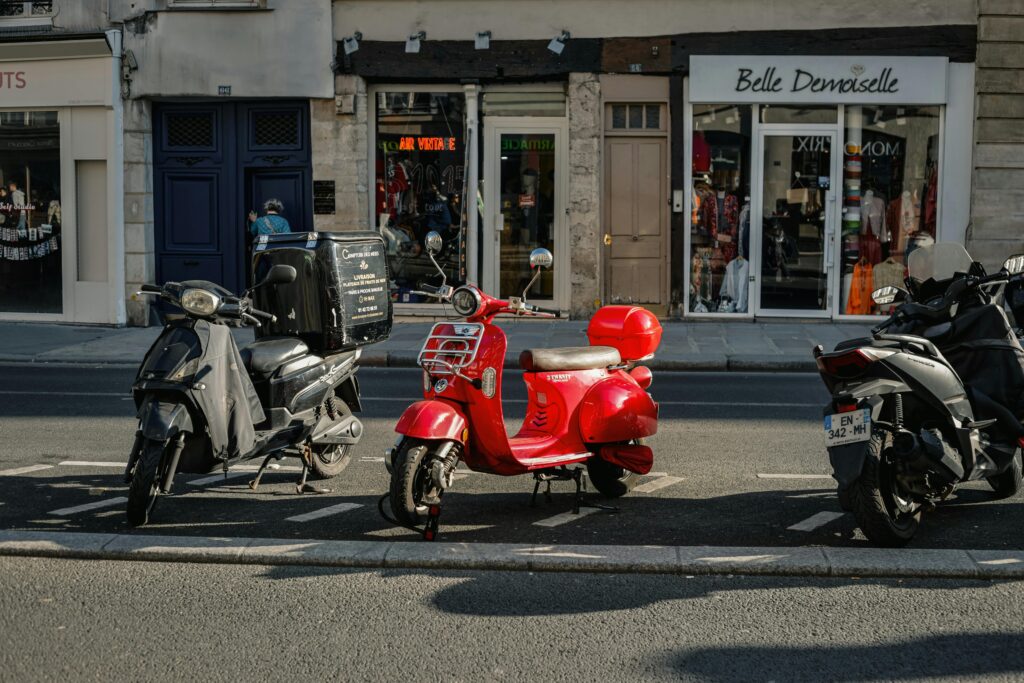
FAQ: Motorcycle Gear Guide for New Riders
Q. Can I wash my motorcycle gear in a regular washing machine?
A. It depends on the material. Most textile gear with removable armor can be washed on a gentle cycle, but always follow the manufacturer’s care label. Leather gear requires special cleaners and conditioners, not machine washing.
Q. How do I store my motorcycle gear when not in use?
Store gear in a cool, dry place away from direct sunlight. Hang jackets and pants to maintain shape, and keep helmets in a padded bag or on a shelf to prevent impact damage.
Q. How do I know when it’s time to upgrade or replace my gear?
Look for signs of wear like fraying seams, worn armor pockets, faded reflective material, or diminished comfort. Helmets should be replaced after any drop or impact—even if damage isn’t visible.
Q. What’s the best way to break in new motorcycle boots or gloves?
Wear them around the house or during short rides. Leather will soften and conform to your body over time. Avoid soaking them in water or applying excessive heat to speed up the process.
Q. Can I wear my regular clothes under motorcycle gear?
Yes, but it’s better to wear base layers designed for riding. These wick moisture, reduce chafing, and make getting in and out of your gear easier—especially in extreme temperatures.
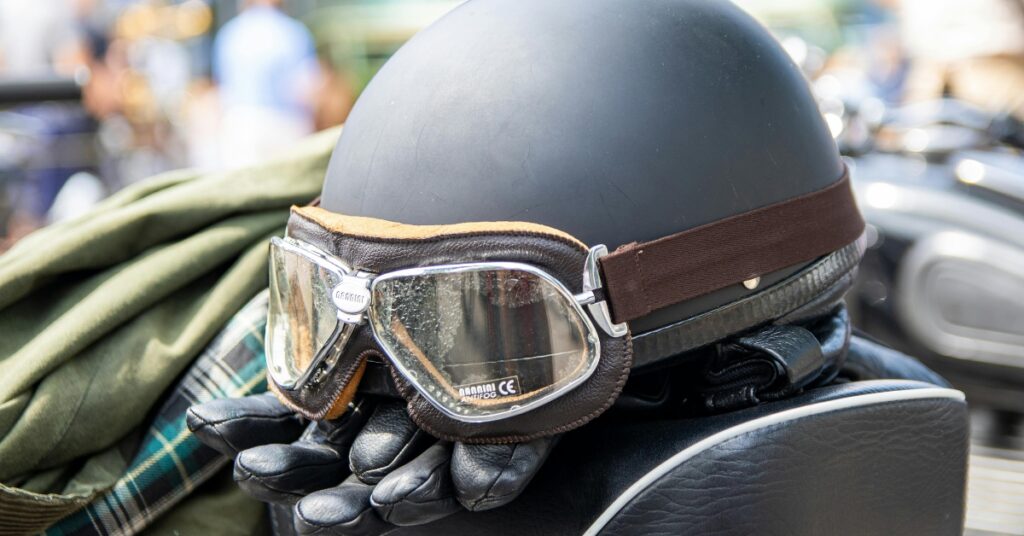
Final Thoughts
Motorcycling offers unmatched freedom, but it comes with real risks. A comprehensive motorcycle gear guide like this one helps beginners build a strong foundation in safety and comfort. With the right helmet, jacket, pants, gloves, and boots—along with thoughtful accessories and shopping strategies—you’ll be ready to hit the road with confidence. Invest in your gear the way you invest in your bike. Ride safe, ride smart, and let your gear work as hard as you do.



